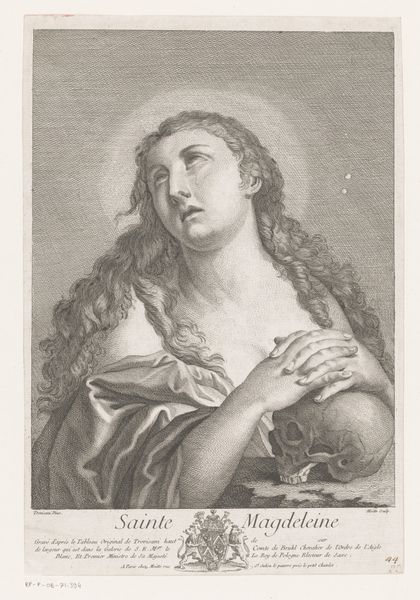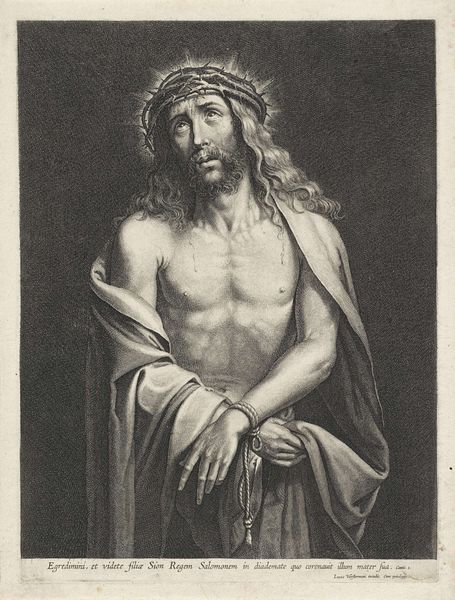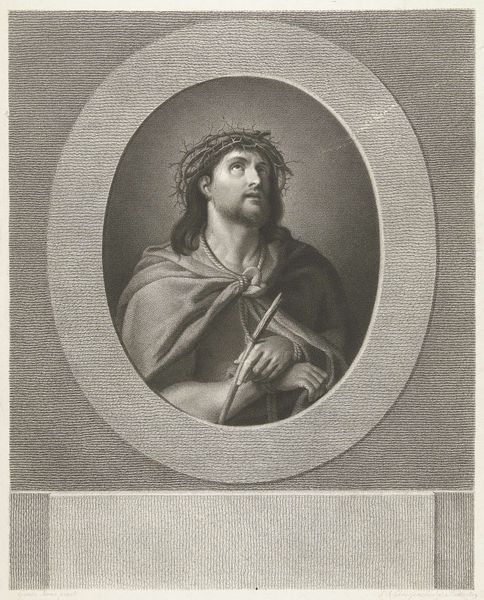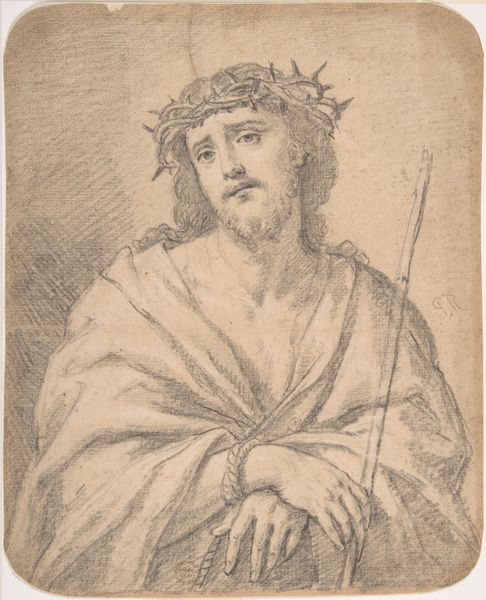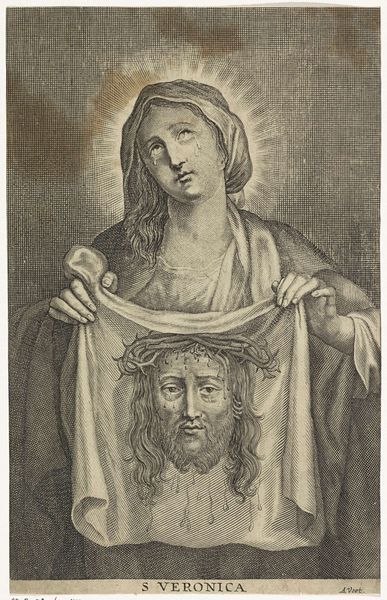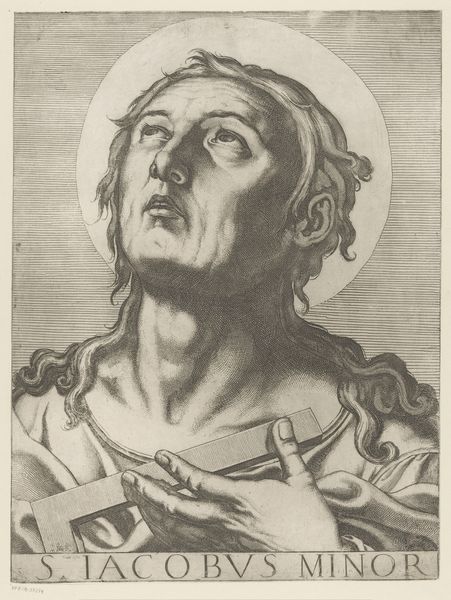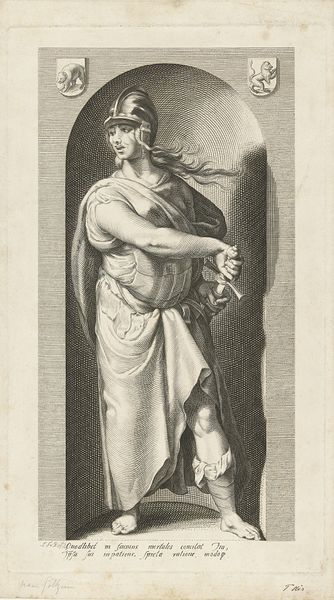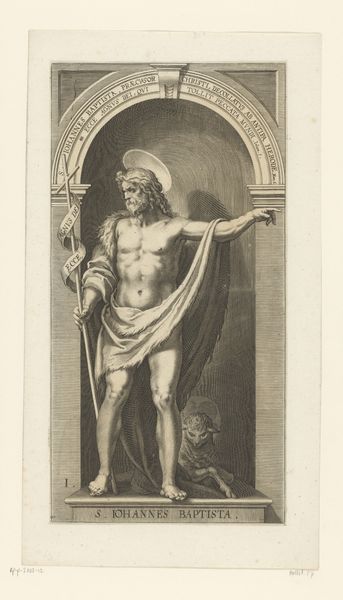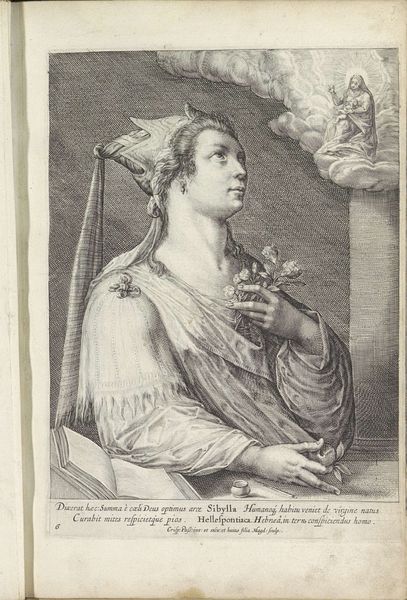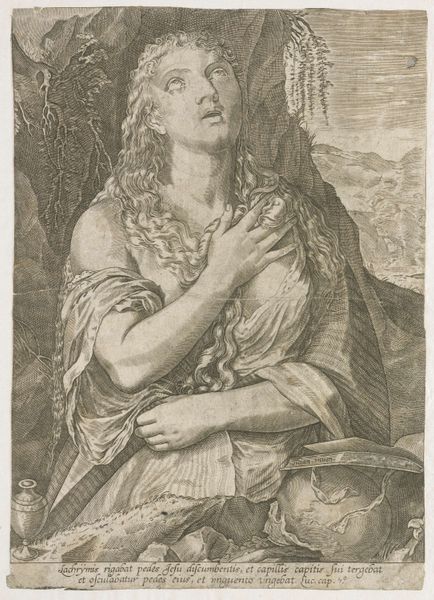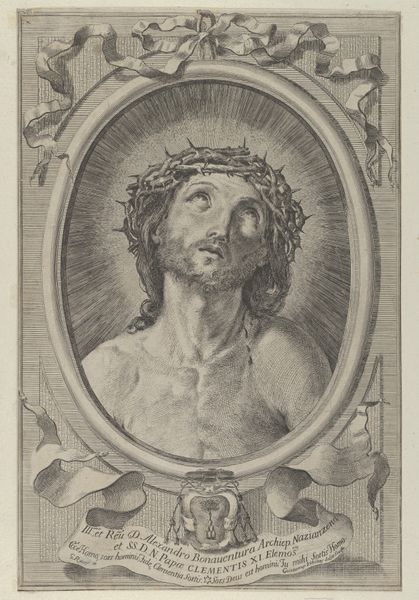
drawing, print, engraving
#
portrait
#
drawing
#
portrait image
# print
#
history-painting
#
engraving
Dimensions: Sheet (Trimmed): 15 1/2 × 10 7/16 in. (39.4 × 26.5 cm)
Copyright: Public Domain
Curator: "Ecce Homo," an engraving realized sometime between 1765 and 1805 by Gaetano Vascellini, is now on display here at The Met. What is your initial take? Editor: The starkness of the grey tones and the visible anguish in his face are striking. There is also an overwhelming sense of vulnerability and raw emotion that really resonates even today. Curator: It's interesting that you say that because in its time, prints like this were very accessible forms of disseminating powerful images. It invites us to consider the ways in which representations of religious and historical figures were strategically circulated within society, and who had access to them. What are your thoughts on the imagery in terms of its potential social impact then? Editor: Well, Vascellini portrays a very human Christ, seemingly moments after the crown of thorns has been forced upon his head. This engraving evokes a strong sense of compassion. Given that many were experiencing profound social inequalities and economic hardships, this image provided a symbol of shared suffering and potential for spiritual redemption. We might think about how an image like this could become a lightning rod for collective emotion or even dissent. Curator: Exactly! And, think of the act of collective viewing and interpretation in places such as churches or public squares, spaces traditionally structured around religious hierarchy and power. What potential do you see for such imagery to upset this order or propose alternative views and counter-narratives? Editor: It reminds me how visual imagery, even seemingly traditional representations, can serve as potent tools for both reinforcing and challenging dominant ideologies and power structures. Considering access, reception and re-interpretation opens pathways for radical dialogues. Curator: A powerful consideration as we continue thinking about images from the past and their role in our contemporary dialogues.
Comments
No comments
Be the first to comment and join the conversation on the ultimate creative platform.
